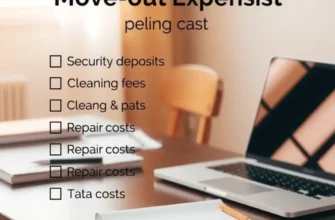Renting a home can be an exciting yet daunting experience, especially for young professionals, first-time renters, students, couples, and families. With rental prices on the rise, unexpected expenses may creep up at the most inconvenient times. An emergency rental fund can be a lifeline, offering peace of mind and greater financial security while ensuring that you can cover unexpected costs like repairs, moving expenses, or even rent during unemployment. This guide walks you through the essentials of setting up an emergency rental fund: how much you need, how to save effectively, and what to consider while renting. By taking these proactive steps, you can ensure a smoother rental journey and protect your financial wellbeing.
Building Your Emergency Fund: Steps and Strategies

Establishing a robust emergency rental fund is a crucial safety net for any renter. It provides peace of mind, knowing that unexpected expenses won’t derail your financial stability. Here, we break down how much you should save, actionable budgeting steps, and how to tackle any hurdles you might face.
Determining Your Savings Target
The first step is figuring out your savings goal. A common recommendation is to save three to six months’ worth of rent. This range allows for enough coverage during job transitions or unforeseen expenses, like urgent repairs. If you’re a young professional or a student in potentially variable circumstances, consider aiming for at least three months of rent. Families might opt for a more substantial buffer, close to six months, to ensure greater security.
Crafting a Budget That Works
Start by reviewing your monthly income and expenses to identify where cuts can be made. Use a simple budget template or app to categorize your spending. Make savings a priority by treating your emergency fund like a recurring expense. Automate transfers to your savings account each payday. Even allocating a modest 5-10% of your income can accumulate over time and can be adjusted as your income grows.
Prioritizing Needs Over Wants
Understanding the difference between needs and wants is essential. While it’s tempting to indulge in new clothes or dining out frequently, these are areas where you can exercise restraint. Redirect funds typically spent on non-essentials towards your emergency fund. Implement a ‘cooling period’ for impulsive purchases to evaluate if they align with your savings goals.
Tackling Potential Challenges
Life often throws curveballs, making consistent saving challenging. You might encounter unexpected medical expenses, vehicle repairs, or fluctuating utility bills. Reassess your budget if such situations arise, focusing on necessary adjustments. Access external resources like community assistance programs or explore opportunities for side income to bolster your fund if needed.
Celebrating Milestones and Staying Motivated
Reaching incremental savings milestones should be celebrated as they highlight your progress. Establish short-term goals, such as saving one month’s rent, to maintain momentum. Reward yourself in small ways that don’t compromise your savings plan. This positive reinforcement promotes consistent habits over time.
For additional resources on how to optimize your financial strategy as a renter, explore renter credit improvement tips to ensure that your financial profile grows alongside your savings.
Building an emergency rental fund doesn’t happen overnight, but with diligence and a strategic approach, you’ll lay a strong foundation for financial resilience. Stay adaptable and rest assured that your efforts today pave the path for peace of mind and stability tomorrow.
Navigating Lease Agreements and Financial Considerations

Understanding lease agreements is crucial for any renter to avoid hidden pitfalls and unexpected costs. Every lease is a legally binding document, outlining both renter responsibilities and landlord obligations. It serves as the foundation of your rental relationship, covering everything from the duration of your stay to the nuances of rent payments.
First and foremost, consider the lease term. Most leases span 12 months, but variations exist, including month-to-month agreements. These shorter terms offer flexibility but sometimes come with a higher rental rate. Identifying the term that best aligns with your lifestyle and financial situation is essential.
Next, examine the rent payment clause. This section will detail when rent is due and acceptable payment methods. Some landlords accept digital payments, while others may only accept checks. Pay close attention to late payment penalties, which can be costly and affect your credit score. For tips on ensuring your rent is paid on time, consider exploring credit improvement tips for renters.
Security deposits also warrant attention. These funds are typically held to cover potential damage beyond normal wear and tear. Ensure your lease specifies the conditions for its return and consider taking photos of the unit at move-in. This documentation can be critical in avoiding disputes when moving out.
Beyond basic rent, some leases include additional charges, like maintenance fees, pet deposits, or utility responsibilities. Clarifying these costs upfront prevents surprises and allows accurate budgeting. For pet owners, understanding pet policies and potential fees is vital for financial planning.
Lease agreements often include a section on modifications. You may be prohibited from altering the property without permission. If you wish to personalize your space, discuss these desires before signing. Negotiate what is permissible, like hanging shelves or painting walls, to avoid penalties.
Another critical financial consideration is renters insurance. While not always required, it protects against losses from theft, fire, or other damages. Some landlords mandate proof of insurance within a specified timeframe, so clarify this stipulation before lease finalization.
Ensure you know your rights and can spot red flags. Educate yourself on state-specific tenant laws, as these can offer protection against unfair practices. Understanding the law empowers you to negotiate better terms and feel confident about what you sign.
Negotiation is not solely about rental price. If a landlord isn’t flexible on rent, consider asking about waived fees, included utilities, or a move-in timeline adjustment. Highlight your strengths as a tenant—good credit, stable income, or a clean rental history. This approach can sometimes yield favorable terms without costing the landlord financially.
Navigating lease agreements with an informed perspective helps ensure a stable living environment. It empowers young professionals, first-time renters, and families alike by allowing them to comprehend and negotiate key financial and legal components. Equipped with this knowledge, renters can make decisions that align with their financial goals and living needs.
Final words
Preparing for the unexpected can be challenging, but establishing an emergency rental fund provides essential security for anyone renting a home in the U.S. With the right strategies and a clear understanding of lease agreements, you can safeguard your finances and focus on enjoying your living space. Whether you’re a student, a couple starting a new chapter, or a family seeking stability, taking these proactive steps today allows for peace of mind in the journey ahead.









